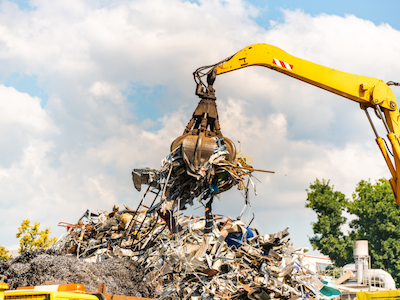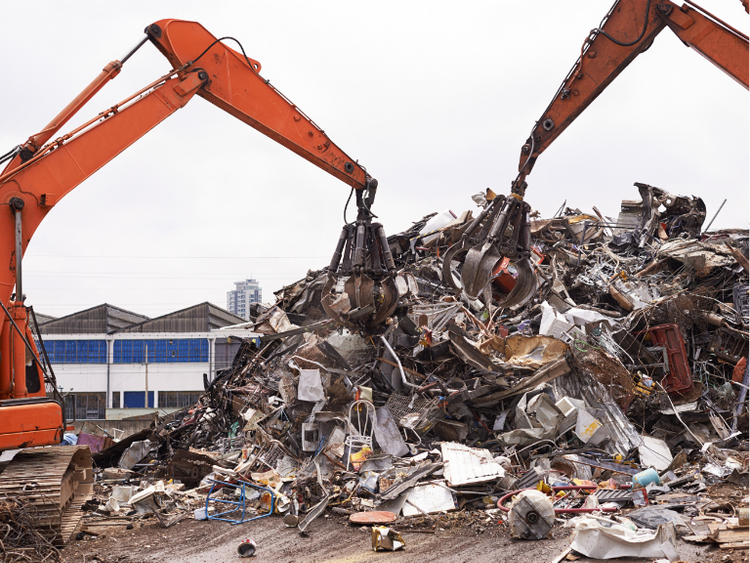Scrap Processors

June 10, 2024
Cash and carry trade in base metals: What it is and what it means for the recycled metals community
Written by Gabriella Vagnini
Implications for scrap metal
In the intricate world of base metals trading, one strategy stands out for its simplicity and effectiveness: cash and carry.
This type of trade, often used by traders and financial institutions, involves buying a commodity in the spot market and simultaneously selling it in the futures market. The objective is to profit from the difference between the current spot price and the futures price, minus storage and financing costs. This strategy can significantly influence the dynamics of the metals market, including the scrap metal sector.
Understanding cash and carry
At its core, a cash and carry trade exploits the arbitrage opportunity arising from the disparity between spot prices and futures prices. When the futures price of a metal, such as copper or aluminum, is higher than the spot price plus the cost of carry (which includes storage, insurance, and financing costs), traders can lock in a risk-free profit by purchasing the metal now and selling it for future delivery at a higher price.
For example, if the spot price of copper is $11,000 per ton, and the future price for delivery in six months is $11,200 per ton, with a total cost of carry amounting to $150, the trader can secure a profit of $50 per ton by engaging in a cash and carry trade.
Impact on base metals market
The practice of cash and carry trading can significantly impact the base metals market. When traders engage in such trades, they increase the demand for spot metals, leading to higher spot prices. Concurrently, the increased supply in the futures market can exert downward pressure on futures prices. This balancing act can help stabilize prices and provide liquidity in the market.
However, the effects of cash and carry trades extend beyond the immediate realm of base metals. They have notable implications for the scrap metal industry as well.
Implications for scrap metal
The scrap metal sector, which relies heavily on the dynamics of the base metals market, can experience both direct and indirect impacts from cash and carry trading.
- Price Volatility: Cash and carry trades can influence the volatility of metal prices. As traders buy large quantities of base metals in the spot market, prices can spike temporarily. This increased volatility can trickle down to the scrap metal market, where prices often correlate with those of primary metals. Scrap metal dealers might face challenges in predicting prices and managing inventory under these conditions.
- Supply Chain Dynamics: When traders engage in cash and carry trades, they may tie up significant amounts of metal in storage, reducing the immediate supply available for industrial use. This reduced supply can lead to higher prices for both primary and scrap metals. Industries relying on scrap metal as a cost-effective alternative to primary metals might experience tighter margins and increased competition for materials.
- Investment and Speculation: The profitability of cash and carry trades can attract more investors and speculators to the metals market. Increased speculative activity can lead to further price fluctuations, impacting the scrap metal sector. Scrap metal prices, already susceptible to global economic trends and industrial demand, might see amplified volatility due to heightened speculative trading in the base metals market.
- Recycling Incentives: Higher prices for primary metals, driven by cash and carry trades, can enhance the economic attractiveness of recycling. As the cost of obtaining primary metals rises, industries might turn more aggressively towards scrap metal to fulfill their needs. This increased demand can boost the scrap metal market, encouraging more recycling activities and investments in recycling infrastructure.
Conclusion
Cash and carry trading is a pivotal strategy in the base metals market, offering arbitrage opportunities for savvy traders. While its primary effects are observed in the pricing and supply dynamics of base metals, the ripple effects on the scrap metal industry are undeniable. From increased price volatility to shifting supply chain dynamics, the influence of cash and carry trades underscores the interconnectedness of the metals market. As the industry continues to evolve, understanding these interdependencies will be crucial for stakeholders across the value chain, from traders and investors to scrap metal dealers and recyclers.






